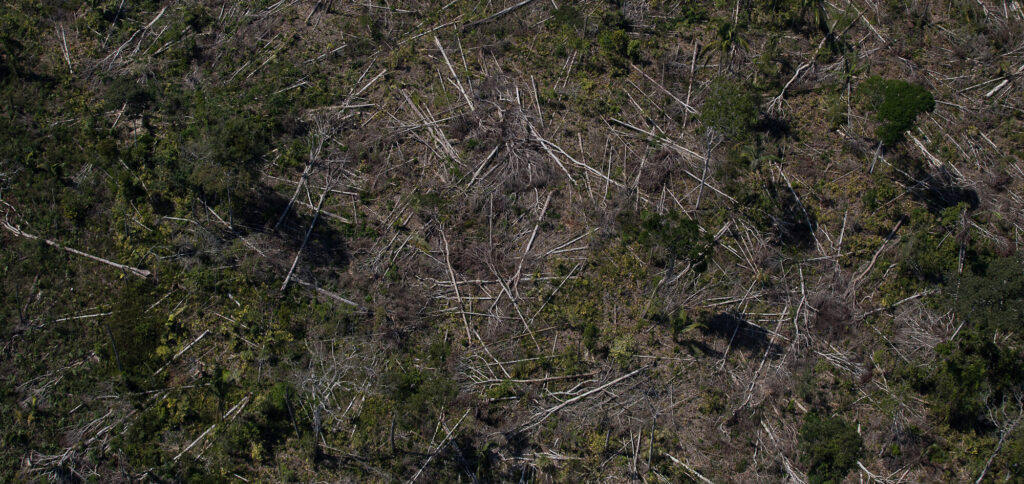Issuance played the role of “carbon sequestrant" of the forest.
ADVERTISING
“The increase in CO2 emissions is the result of increased deforestation, which impacts the forest, and thus this forest ends up turning into greenhouse gases that will contribute negatively to the warming of the planet and climate change”, explains the first author of the article (🇬🇧), Celso HL Silva-Junior, permanent professor in the Postgraduate Program in Biodiversity and Conservation at the Federal University of Maranhão (UFMA).
Considered an efficient model for forest preservation, TIs have come under increasing pressure, such as the increase in mining and illegal logging. With the advancement of devastation, caused by different environmental risks, such as the weakening of supervision and the reduction of protection and people's rights, indigenous lands can reverse the vital role of protected areas in combating climate change and keeping the forest standing.
The research showed that deforestation in TIs reached an area of 1.708 square kilometers (km²), which is equivalent to 2,38% of all deforestation in the Brazilian Amazon in the period. In 232 TIs analyzed, the devastation rate was, on average, 35 km² per year, representing an increase of 129% between 2013 and 2021. Considering only the last three years, the growth was 195%.
ADVERTISING
Two way street
Tropical forests are one of the most important ecosystems in reducing climate change. But they can work as a two-way street, absorbing carbon while they grow and maintain themselves, but releasing gases when degraded or deforested, hence the importance of conservation and policies to combat deforestation, reinforces the researcher.
Deforestation
The research shows that 42% of the ILs analyzed had an increase in the deforestation rate, and in 20 of them the trend was more significant. Among these, TI Arara recorded the lowest rate (0,02 km² per year), while Apyterewa had the highest (8,58 km² per year). Both are located in the State of Pará.
On the other hand, 11% of the areas analyzed reduced deforestation, five more significantly. Among them is the Alto Turiaçu TI, in Maranhão, where around 1.500 indigenous people from the Awa Guajá, Ka'apor and Tembé people live.
ADVERTISING
Public policies
In the article, the researchers described 6 recommendations to contribute to the advancement of public policies aimed at preventing the spread of deforestation in these areas.
They are: the repeal of laws and regulations that caused environmental setbacks; the strengthening of inspection institutions; the creation of 10 km buffer zones between ITs and areas of mineral exploration or high-impact projects, in addition to the cancellation of all CARs (Rural Environmental Registry) within the ILs.
They also propose support for initiatives that promote agriculture and other sustainable land use practices, including ecosystem restoration projects, and the strengthening of remote sensing monitoring, with investments in the development of new systems with improvements in frequency and scale.
ADVERTISING
Finally, they recall the importance of strengthening the National Foundation of Indigenous Peoples (Funai), the federal body responsible for guaranteeing indigenous rights.
The study also received funding through the Greenhouse Gas Research and Innovation Center (RCGI) – an Engineering Research Center (CPE) constituted by FAPESP and Shell at the University of São Paulo (USP) – and a Thematic Project linked to the FAPESP Research Program on Global Climate Change (PFPMCG).
(With Brazil Agency)
Read also
(🇬🇧): content in English
(*): Content in other languages translated by Google Tradutor
(🚥): may require registration and/or subscription
* The text of this article was partially generated by artificial intelligence tools, state-of-the-art language models that assist in the preparation, review, translation and summarization of texts. Text entries were created by the Curto News and responses from AI tools were used to improve the final content.
It is important to highlight that AI tools are just tools, and the final responsibility for the published content lies with the Curto News. By using these tools responsibly and ethically, our objective is to expand communication possibilities and democratize access to quality information. 🤖
ADVERTISING





